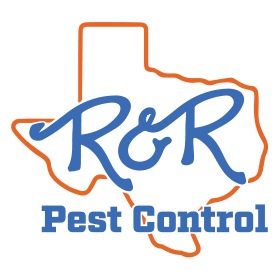Identify a Pest
Ants
Carpenter Ants are relatively large. Known mostly by their size and color, carpenter ants are commonly black, however their color can range from black to red or even solid red. They have one segment to their waist and a long abdomen containing lightly-colored dull hairs.
Carpenter ants are mostly black, but their colors can also range from black and red or even solid red. Though their name suggests otherwise, they do not eat wood and instead feed on plant juices and other insects.
Black Carpenter Ants do bite and can spray formic acid, but they do not possess the ability to sting their prey. Habits: Most carpenter ant species establish their first nest in decayed wood and later expand or enlarge this into sound wood. Inside structures, nests are located in wood (preferably softened by fungus rot or water damage) in insulation, and/or wall voids.
Worker carpenter ants are a nuisance when out searching for food but are destructive to timbers utilized for nesting activities. Outside structures, nests are typically found in rotting fence posts, stumps, old firewood, dead portions of standing trees, and under stones or fallen logs.
Swarming carpenter ants can appear inside or outside homes and structures from spring to fall in central Missouri.
Swarming black carpenter ants can easily be mistaken for swarming termites if found inside homes and structures.
American Cockroaches
These large roaches are reddish brown in color with a pale brown to yellowish band across the bottom of their head shield. Adult Amercian roaches have full sets of wings. Immature American cockroaches are shiny and uniformly grayish brown in color. Habits:While the American cockroach may be found in houses, they are more common in restaurants, grocery stores, hospitals, and other commercial buildings where they infest basements, food-storage, prep areas, and steam tunnels. They may enter structures through sewer drains or may be brought in by an outside source. American roaches can infest any structure, but, more than likely it is going to be a older building.German Cockroaches
The German cockroach is by far the most common and biggest nuisance of all the roaches. They are light brown to tan in color with 2 dark stripes on their head. Immatures are dark brown to black in color with a pale stripe on their backs. Habits:The German cockroach prefers living in warm, humid areas and are usually found in kitchens and bathrooms, but may spread to other areas in a bad case. German roaches can be brought into a structure on grocery sacks and boxes or inside infested refrigerators, microwaves, television sets, etc. Due to their rapid reproduction rate, an infestation can become extremely bad unless treated immediately. They will feed on almost anything with nutritional value such as food, glue, soap, etc. It is possible for the German cockroach to travel outdoors and from house to house in the summer months.Wolf Spider
These spiders have long legs and can vary in color from gray, brown, black and tan with dark brown or black stripes. Wolf spiders don’t spin webs, instead they hunt down their prey. Females are larger than males and will vary in size from 1/4th” to 1” not counting their legs. A Wolf spider’s diet consists of all ground dwelling insects including other spiders. If provoked, wolf spiders can bite but are harmless to humans. Female Wolf spiders will carry her egg sack at the bottom of her abdomen and later carry the babies on her back.Brown Recluse
The brown recluse is a light tan to dark brown in color with a violin or fiddle shaped dark brown mark starting at the front of the spider with the neck of the violin pointing towards the rear. They get the recluse name from their reclusive habits. They prefer to live in undisturbed, seldom used areas such as boxes, underneath tables and chairs, along baseboards, in closets, attics, crawlspaces, and basements. Outside they live around rocks, logs, woodpiles, in utility boxes, exterior rodent bait stations and debris. When disturbed, the spider will usually try to run for cover instead of biting. Bites most commonly occur when putting on seldom used clothing and shoes, cleaning out closets or storage areas, and rolling over on one while in bed. Their bite is not usually felt immediately but pain is usually felt within 6–8 hours of being bitten. An ulcer will usually form where the bite was and can result in severe scarring. There is no available antitoxin for brown recluse bite victims.Hornets
These nuisance pests are black and yellow in color. They build a paper nest that can get as large as a basketball usually beneath the ground. They can also nest in protected areas such: Trees and shrubs, sheds, porches, attics, wall voids, etc. The yellow jacket can be extremely aggressive and can sting repeatedly without provocation. The yellow jacket can commonly be found scavenging for human food at picnics, cookouts, and around garbage cans or dumpsters.Red Wasps
The Red Wasp is a slender, narrow-bodied insect with long legs. They are reddish-orange to dark brown color. Their paper nest is umbrella shaped and has hexagonal cells that are left open and visible. Red nests can often be found along eaves, window frames, porch ceilings, rafters, etc.Mosquitos
Mosquitoes are gray to black in color with 2 long narrow wings and a long proboscis or beak. They are of concern because of the deadly diseases that they can transmit to humans such as malaria, yellow fever, and West Nile. The use of insect repellants is quite effective in preventing mosquito bites. Mosquito larvae lives in standing water, so emptying or eliminating containers that may hold water around your yard will greatly reduce the number or mosquitoes around the home.
Termites
Eastern Subterranean Termites are a social insects that come from a colony located underground between 3-12 feet beneath the surface. The colony starts with a king and a queen. The queen can live up to 50 years and can lay an egg about every 15 seconds! From the egg she’ll produce one of three main members: a worker, soldier, or a reproductive. Workers can live 4-5 years and will continuously forage underground (up to 400 feet around the colony and 30 feet of depth) searching for cellulose.
Worker Termites actually consume, swallow, and defecate the soil to make trails that are pheromone scented. One they find wood they consume it, return to their colony and regurgitate it to feed the others. A large colony can consist of over 1 million workers. An established colony can consume the equivalent of approximately 5 to 15 feet of 2×4’s per year!
Termite Soldiers resemble a worker in size but have an orange- brownish head with large mandibles. Their job is to defend the colony, food gathering area and the workers. Their mouth parts are not designed to directly eat wood and must be fed regurgitated cellulose by a worker.
Winged Reproductive Termites or “swarmers” are only produced by the queen once the colony is well established, usually once the colony is 4-5 years old or approximately 100,000 in population. The queen can produce as many as 20,000-30,000 swarmers per year! In the spring these swarmers will instinctively leave the colony by following active mud trails made by the workers and will emerge from an active termite infested area. The swarmers will then fly out form the active area and try to get as far away as possible. Swarming termites have been found to fly as far as 1 mile from the swarm sight! Swarmers do not do any direct damage and do not consume cellulose – they are new kings and queens of a potential new colony. Within approximately 2 hours of the initial swarm these reproductives must disperse, drop their wings, choose a mate, and excavate into the soil before they are eaten by a predator or dehydrate and die.
Rats
The roof rat has soft, smooth brown and black fur with a white, gray, or black belly. They have a pointed muzzle, large eyes and ears, and a long, scaly tail. Infestation signs are the same as other rodents. They have poor vision but keenly developed senses of hearing, smell, touch, and taste. They are fairly cautions about new objects although they are constantly exploring their surroundings. In structures, roof rats prefer to nest in the upper parts of the building, but may occasionally be found in basements and sewers. Outdoors, they prefer nesting in trees, but burrows are sometimes found in vegetation around buildings. Roof rats also carry a number of diseases.
Scorpions
Adults average about 2-3/8 inches (60 mm) in length, with the tail being longer in the males than in the females. Body color of adults varies from yellowish to tan, marked with two broad, blackish stripes on the upper surface of the abdomen. Populations in the Big Bend area may be only faintly marked or completely pale. There is a dark triangular mark on the front (anterior) portion of the head region (carapace) in the area over the (median and lateral) eyes. Younger specimens may be overall lighter in color, and basis of the pedipalps and the last segment of the body (postabdomen) is dark brown to black. The key recognition characters for this species are the slender pedipalps and the long slender tail.
Scorpions use the pincers to capture and hold prey. This species occurs under rocks, under boards, and in debris. It can be found indoors or outdoors in a wide variety of habitats (pine forests in East Texas, rocky slopes, grasslands, juniper breaks in other parts of the state).
Most common and widespread scorpion in Texas; stings are painful and produce local swelling and itching that may persist for several days. Reaction to the bite may vary based on sensitivity of the individual. Non-lethal stings may be mild to strong and produce edema (swelling), discoloration, numbness, and pain which may last for several minutes to several days. Deaths attributed to this species are not well substantiated. There are no scorpions in Texas that are considered lethal to man.
Get Your FREE Estimate
Get your FREE estimate via our online “Advanced Booking System” or give us a call using our Toll FREE number. We’ll whip up an estimate and one of our pest control experts will give you a call. 830.895.4007.
Let's Talk
We always love hearing from our customers so please don't hesitate to contact us!
About R&R
LET'S TALK
830.895.4007
1408 Broadway, Kerrville, TX 78028
Mailing Address:
1408 Broadway, Kerrville, TX 78028


